Colloquia for Spring 2016
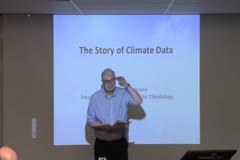
The Story of Climate Data
May 06, 2016
Dr. Thomas C. Peterson (CSU ATS Ph.D. 1991)
Hosted by ATS Dept
From the first instrumental climate observations in 1697 up to the global temperature record set last year, professional climate scientists owe a debt of gratitude to the millions of observations taken by volunteers around the world. In addition to describing how average global temperatures are determined and their implications, this talk will highlight the results of the latest science on…
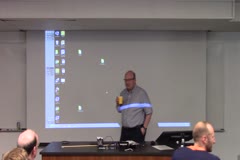
Herbert Riehl Memorial Award and Alumni Award for Outstanding Research
May 06, 2016
Leah Grant
Hosted by ATS Dept
The 2016 Riehl Award for an outstanding paper based on MS research went to Jack Kodros. Jack, who is advised by Jeff Pierce, won for his recent Atmospheric Chemistry and Physics paper entitled Uncertainties in global aerosols and climate effects due to biofuel emissions. Jack was unable to attend today's ceremony (a long story involving bureaucracy and the Indian government). We will…
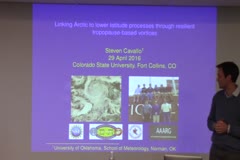
Linking Arctic to lower latitude processes through resilient tropopause-based vortices
April 29, 2016
Steven M. Cavallo
Hosted by Russ Schumacher
Born in polar regions, a tropopause polar vortex (TPV) is an often sub-synoptic cyclone embedded within the larger-scale tropospheric polar vortex. TPVs can be long-lived phenomena with monthly time scales, and have complex interactions with features such as sea ice, moisture, and surface cyclones. Unfortunately little is known regarding how polar processes interact with lower latitude weather…
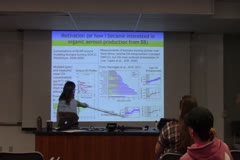
Exploring Chemical Complexity in Biomass Burning Emissions and Air Quality Models
April 22, 2016
Kelley Barsanti
Hosted by Jeff Pierce
Biomass burning (BB) is the second largest global emissions source of non-methane organic compounds (NMOCs). Chemical transformations of emitted NMOCs lead to the production of ozone (O3) and secondary particulate matter (PM), thereby affecting air quality and climate. Until recently, a significant mass fraction of NMOCs in BB emissions (up to 80%) has remained uncharacterized or unidentified.…
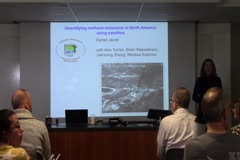
Quantifying methane emissions in North America using satellites
April 15, 2016
Daniel J. Jacob (Vasco McCoy Family Professor of Atmospheric Chemistry and Environmental Engineering)
Hosted by Emily Fischer
Improved understanding of methane emissions and their trends is critical for climate policy. Satellite observations provide an emerging resource for continuous global mapping of atmospheric methane. I will talk about ongoing work in my group to use satellite observations for quantifying methane emissions in North America, including integration with new information from aircraft campaigns and…
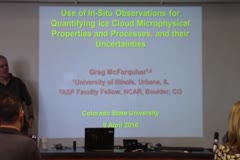
Use of In-Situ Observations for Quantifying Ice Cloud Microphysical Properties and Processes, and their Uncertainties
April 08, 2016
Greg McFarquhar
Hosted by Paul DeMott
Some of the most fundamental and complex problems in climate and weather research today are our poor understanding of the basic properties of clouds and our inability to determine quantitatively the many effects that clouds have on weather and climate. The representation of ice microphysical processes such as riming, sedimentation, aggregation, evaporation and deposition has large effects on…
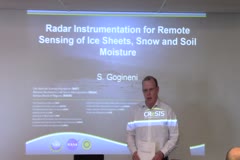
Radar Instrumentation for Remote Sensing of Ice, Snow, and Soil Moisture
April 01, 2016
Prasad Gogineni
Hosted by David Randall
We developed radar instrumentation operating over a frequency range extending from approximately 14 MHz to 36 GHz for operation on long- and short-range aircraft and Uninhabited Aircraft Systems (UASs). We developed our existing radar instrumentation primarily to sound ice and image the ice-bed interface, map near-surface internal layers in polar firn and ice, measure the thickness of snow…
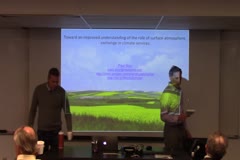
Toward an improved understanding of the role of surface-atmosphere exchange in climate services
March 31, 2016
Paul Stoy
Hosted by Eric Maloney
The ongoing climate emergency of 2016 emphasizes ever more strongly the central role of humans in the climate system. Many of the climate changes that we are making involve the exchange of trace gases, water, and energy between the land surface and the atmosphere. It is our responsibility to understand these processes. Here, I address the ability of surface-atmosphere exchange measurements to…
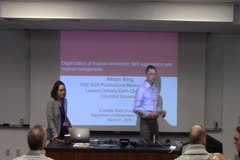
Organization of tropical convection: Self-aggregation and spontaneous tropical cyclogenesis
March 21, 2016
Allison A. Wing, Ph.D., NSF AGS Postdoctoral Research Fellow, Lamont-Doherty Earth Observatory, Columbia University
Hosted by Eric Maloney
Tropical clouds and relative humidity play a key role in both the planetary energy balance and the sensitivity of global climate to radiative forcing. Both clouds and relative humidity are also strongly modulated by the organization of tropical convection, which results in a large fraction of tropical cloudiness and rainfall. Here, we investigate the organization of tropical convection in the…
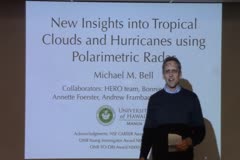
New Insights into Tropical Clouds and Hurricanes using Polarimetric Radar
March 07, 2016
Dr. Michael M. Bell, Assistant Professor, University of Hawaii at Manoa
Hosted by Eric Maloney
Recent upgrades to the U.S. operational radar network now allow for polarimetric measurements of tropical convection and cyclones near Hawaii and the U.S. coast, providing new opportunities for studying these weather phenomena. In addition to the operational radar observations, a Doppler on Wheels mobile polarimetric radar was deployed to Oahu from 22 October to 13 November 2013 as part of the…
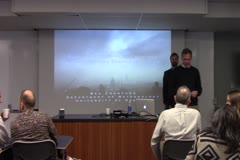
Surface-atmosphere exchanges of energy and carbon in urban environments
February 25, 2016
Benjamin Crawford
Hosted by Eric Maloney
Cities account for less than 5% of total land surface, yet are home to over half the world's population and the majority of anthropogenic greenhouse gas emissions. Relative to more natural environments, urban areas are characterized by extremely heterogeneous landscapes and the presence of intense anthropogenic activity. This results in drastically altered surface-atmosphere exchanges of…
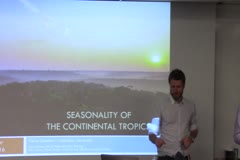
Biosphere-atmosphere interactions and seasonality in the continental Tropics
February 22, 2016
Pierre Gentine
Hosted by Eric Maloney
The seasonal cycle in the continental Tropics remains poorly understood. Climate models for instance do not reproduce the main features of tropical climates and exhibit major deficiencies in the Amazon with incorrect phase of photosynthesis and evapotranspiration. In this presentation I will present how the diurnal and seasonal cycles of the hydrologic cycles are intertwined, using the…
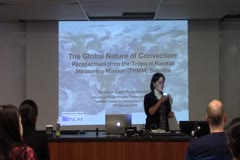
The Global Nature of Convection: Perspectives from the TRMM satellite
February 15, 2016
Kristen Rasmussen
Hosted by Eric Maloney
For over 16 years, the Precipitation Radar of the Tropical Rainfall Measuring Mission (TRMM) satellite detected the three-dimensional structure of significantly precipitating clouds in the tropics and subtropics. The multi-year dataset shows convection varying not only in amount but also in its very nature across the oceans, continents, islands, and mountain ranges of the tropics and…
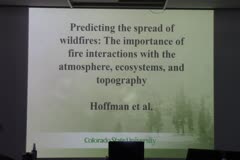
Predicting the spread of wildfires: The importance of fire interactions with the atmosphere, ecosystems, and topography
February 05, 2016
Chad Hoffman (Assistant Professor, Forestry Rangeland Stewardship, CSU)
Hosted by Jeff Pierce
Advancements in computing power have created new opportunities for the use of numerical models in wildfire research. Models like the Wildland Fire Dynamics Simulator (WFDS) and FIRETEC attempt to represent interactions between the dominant processes that determine wildfire behavior such as convective and radiative heat transfer, aerodynamic drag and buoyant response of the atmosphere to heat…
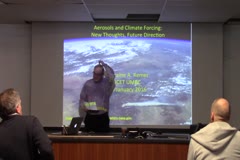
Aerosols and Climate Forcing: New Thoughts, Future Direction
January 26, 2016
Lorraine A. Remer (JCET-UMBC)
Hosted by Jeff Collett
Everybody has heard about climate change or global warming, and most people can link this change to the forcing elements of either carbon dioxide or greenhouse gases. It is simple to understand how greenhouse gases trap outgoing long wave radiation to keep the planet's surface warmer than it would be otherwise. It is also simple to understand how human-enhanced emissions have increased over…
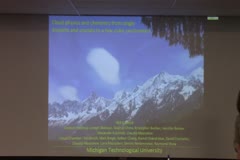
Cloud physics and chemistry from single droplets and crystals to a few cubic centimeters
January 22, 2016
Will Cantrell
Hosted by Sonia Kreidenweis
To understand Earth's climate and weather, you must understand clouds on scales ranging from the characteristic size of water molecules (a few Angstroms) to synoptic and global circulations (hundreds to thousands of kilometers). Large scale forcing drives processes at the scale of single water droplets and ice crystals while microscale processes feed back and affect the larger scales. In this…
